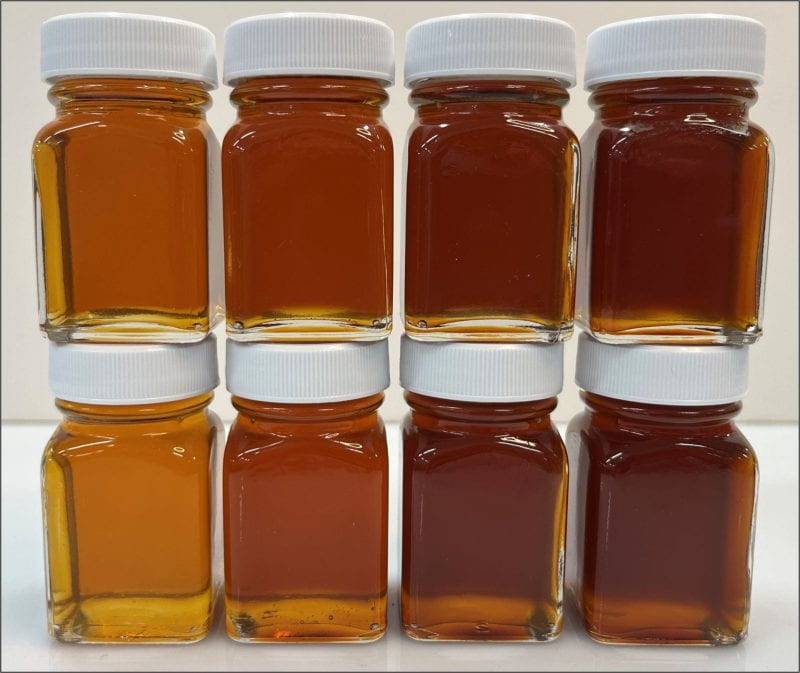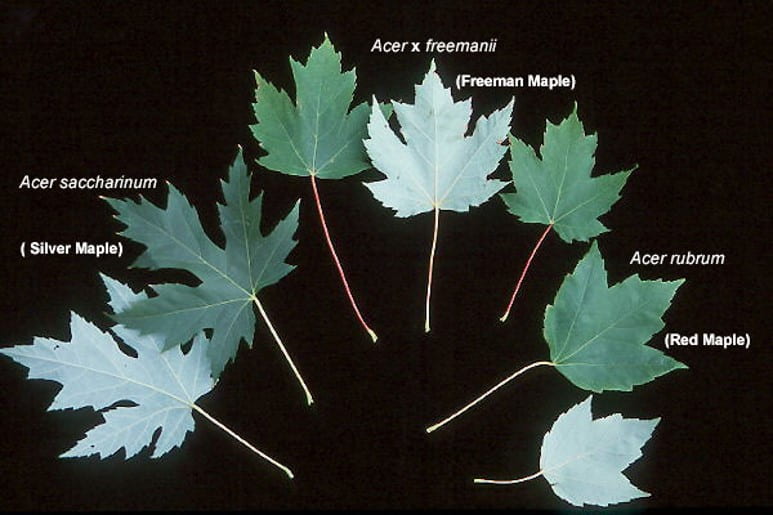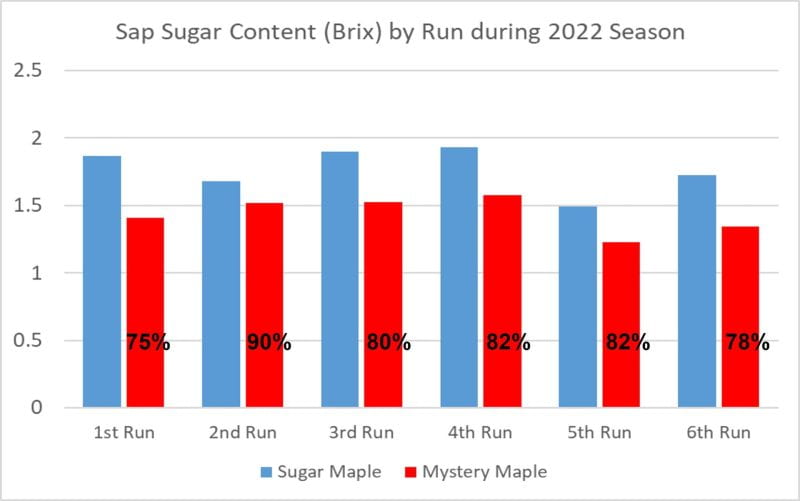Ohio Maple Days 2022 did not disappoint. The food was fantastic, the vendor room crowded, and the presenters shared a wealth of knowledge of expertise across a wide range of subjects. I was among those speakers, and Abby van den Berg and I presented a pair of talks that focused on those other maples. Last week I shared a quick rundown of 20 short statements that summarize the Ohio work we have done from a high bird’s-eye viewpoint. This week, we’ll check out Abby’s perspective from Vermont which focused on 4 central questions regarding red maples. Before we get into it, be sure to mark your calendars for next year’s conference December 8th and 9th!
Abby van den Berg asked and attempted to answer 4 main questions of red maple.
- Red maple, Are you as sweet as sugar maples?
- Red maple, Do you have lower yields than sugar maples?
- Red maple, Do you slow or stop running earlier than sugar maples?
- Red maple, Does your sap make inferior or different-tasting syrup than sugar maples?
My main disclaimer, and one that I know Abby would echo, is that the answers she provided are pertinent and specific to a single research study in Vermont. All of the answers should not be directly applied to Ohio, but there is certainly LOTS to learn and consider. Why? Well, Vermont is not Ohio, and this research is on reds and we have mystery maples. So for a host of reasons – please learn from this incredibly interesting study, but do not directly project these results into your own woods.
First – Red Maple, Are you as sweet as sugar maples? The answer here is not a surprise, the answer is “no.” Abby’s data was “very crude” by her own words, but Brix analysis shows that red maples track 0.2-03 Brix beneath sugar maples most of the season. This is supported by our Ohio study and consistent with patterns we have observed.
Second – Red Maple, Do you have lower yields than sugar maples? From the perspective of statistical difference, no – red maples do NOT have lower production potential than sugar maples. In the Vermont studies, heavy sap flow counterbalanced the slightly lower Brix levels to result in similar production outputs between red and sugar maples. Does this mean they are identical or equal? Not necessarily, but per the study design, they are not different.
Third – Red Maple, Do you slow or stop running earlier than sugar maples? No. The Vermont study produced no evidence that red maples slow down earlier than sugar maples. Is this consistent with our Ohio results? No. Why? We have some guesses and some hypotheses we’ve discussed, but this potential difference will be one to focus on as we learn more and more about these systems.
Fourth – Red Maple, Does your sap make inferior or different-tasting syrup than sugar maples? A tasting experiment pitted red maple syrup (top row) against sugar maple syrup (bottom row) that was produced by trees in the same woods with the same methods at the same time under similar conditions as tightly controlled and identical as humanly possible. Late-season syrup was deemed similar with respondents not able to differentiate between the 2 syrups. Early-season syrup however did produce detectable differences in taste and profile. Further research is ongoing to trace potential differences back to a source – was it a difference in carbohydrates or invert levels, volatile aroma or flavor compounds? Abby was not totally sure just yet, but I am sure we will find out what she discovers. The most important finding here is that red maple syrup did not produce detectable late-season off-flavors as that is a common suspicion among maple producers.
You can read more about these results in the following article and recorded webinar:
Red Maple as Crop Trees for Maple Syrup Production









